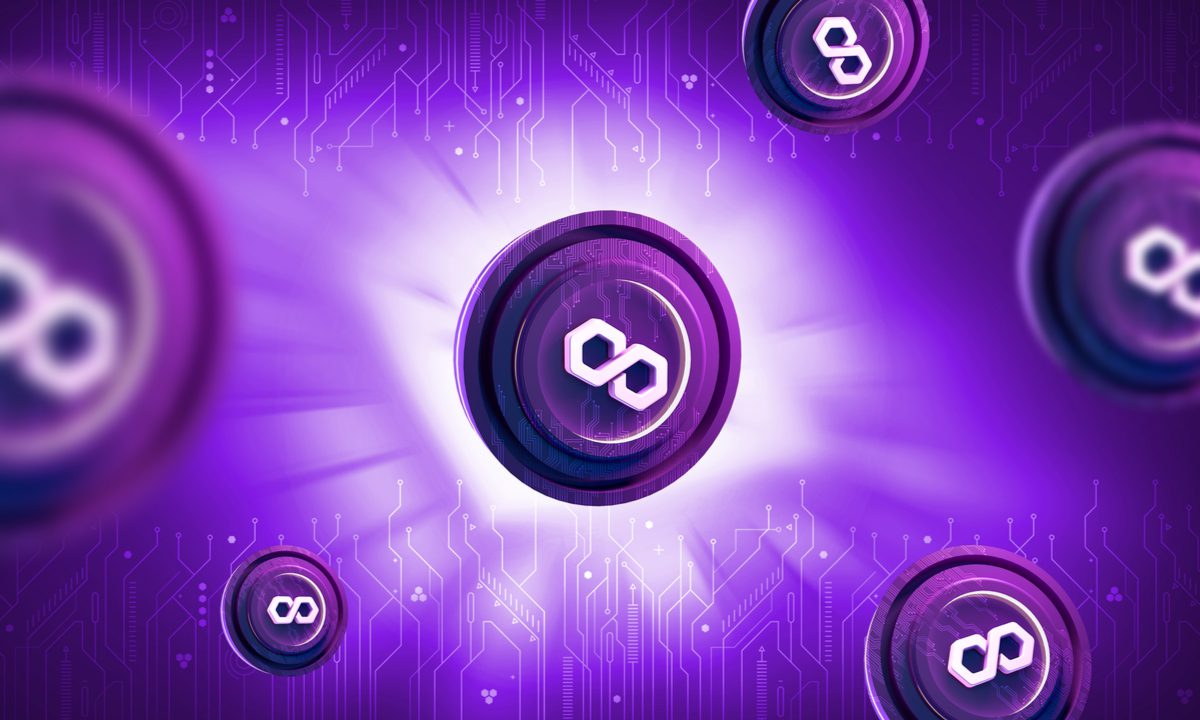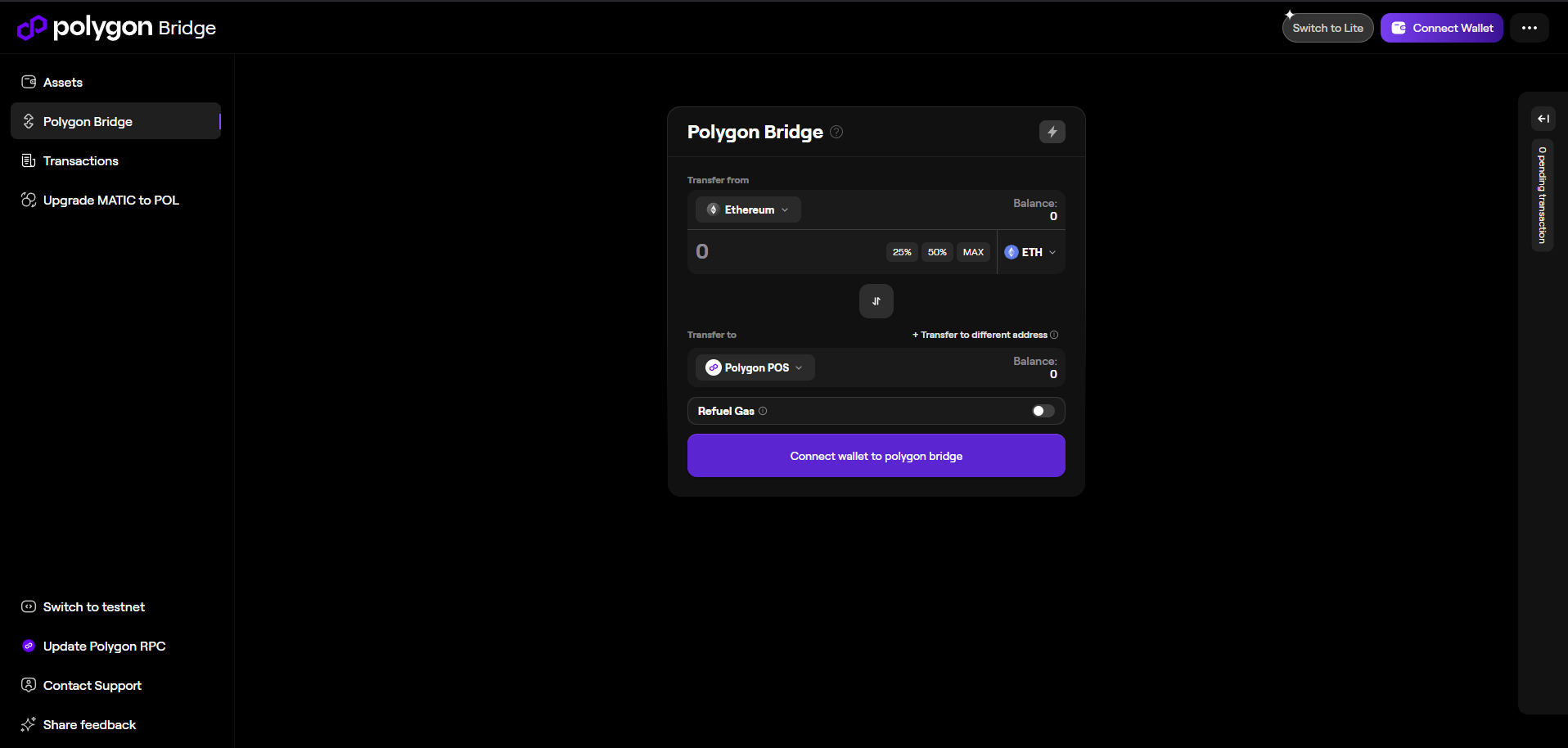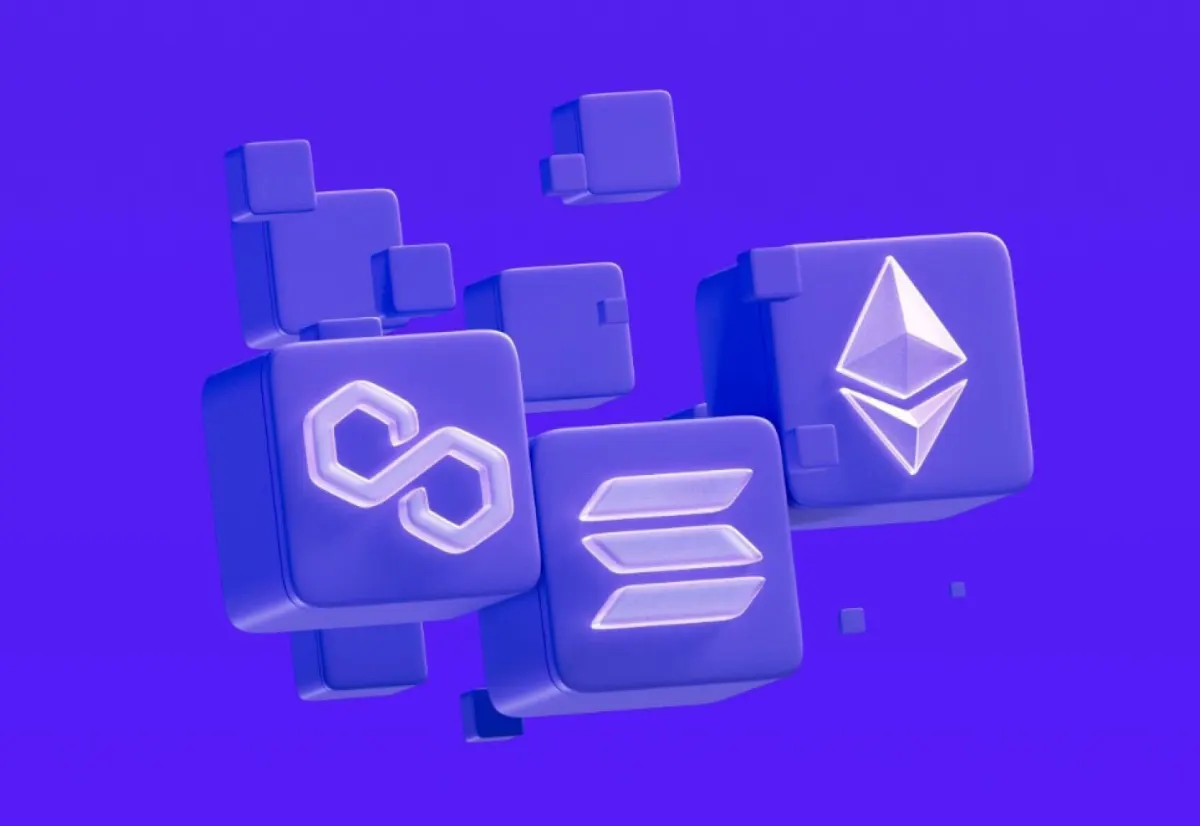Polygon Bridge: A Secure Way to Transfer Assets
Introduction:
The Polygon Bridge is a vital component of the Polygon ecosystem, enabling seamless asset transfers between Ethereum and Polygon networks. As Ethereum continues to face scalability issues with high gas fees and slow transaction speeds, the Polygon Bridge offers an efficient solution by allowing users to interact with Polygon’s Layer-2 scaling infrastructure.
This guide will explore how the Polygon Bridge works, the types of bridges, fees, security mechanisms, and how to use it efficiently.
What is the Polygon Bridge?
The Polygon Bridge is a trustless cross-chain communication protocol that enables ERC-20, ERC-721, and ERC-1155 token transfers between Ethereum and Polygon. It helps users take advantage of Polygon’s low-cost, high-speed transactions while maintaining interoperability with Ethereum’s robust ecosystem.
By bridging assets, users can:
- ✅ Reduce transaction fees
- ✅ Enjoy faster finality
- ✅ Utilize Polygon’s extensive DeFi, NFT, and gaming platforms
- ✅ Maintain compatibility with Ethereum-based applications
Key Features:
- User-Friendly Interface: An intuitive UI for seamless asset transfers.
- Fast Transactions: Quicker finality than Ethereum mainnet.
- Low Transaction Fees: Cost-effective transactions due to Polygon's scalability.
- Security: Transactions are verified through smart contracts, ensuring trustless interactions.
- Wide Compatibility: Supports multiple wallets and DeFi applications.
How to Use the Polygon Bridge:
- Connect a Web3 Wallet: Use MetaMask or another compatible wallet.
- Select the Asset to Transfer: Choose a token or NFT.
- Initiate the Transfer: Confirm the transaction and monitor progress.
Benefits of Using Polygon Bridge:
- Scalability: Transactions are processed faster and with lower fees.
- Interoperability: Seamless interaction between Ethereum and Polygon ecosystems.
- Decentralization: Secure and trustless transactions via smart contracts.
- Growing Ecosystem: Compatible with many DeFi platforms, DApps, and Web3 projects.
Security and Governance:
Polygon Bridge ensures secure, trustless asset transfers through smart contracts, with governance managed via community-driven initiatives. The network is continuously monitored and improved to mitigate risks.
How Does the Polygon Bridge Work?
The Polygon Bridge uses smart contracts and cryptographic proofs to enable secure and decentralized token transfers.
Key Steps in the Bridging Process
- Locking Assets on Ethereum: Users initiate a transfer by locking tokens in an Ethereum smart contract.
- Proof Verification: The transaction is verified using Merkle Proofs and relayed to the Polygon network.
- Minting on Polygon: Once verified, an equivalent amount of tokens is minted on Polygon.
- Withdrawing Funds Back to Ethereum: When withdrawing, tokens on Polygon are burned, and the original tokens on Ethereum are unlocked.
The process ensures that tokens are never duplicated—just transferred securely between chains.
Types of Polygon Bridges
1. PoS Bridge (Proof of Stake Bridge)
- Consensus Mechanism: PoS (Proof of Stake) validators
- Speed: Faster (~10-30 min deposit time)
- Security: Decentralized and secured by Polygon validators
- Supported Assets: Most ERC-20, ERC-721, and ERC-1155 tokens
The PoS Bridge is the default and most commonly used bridge for transferring assets. Since it operates on Polygon’s validator set, deposits are relatively fast, while withdrawals take longer (~3 hours) due to security mechanisms.
2. Plasma Bridge
- Consensus Mechanism: Ethereum’s Plasma framework
- Speed: Slower (~7-day withdrawal period)
- Security: Extremely secure (ideal for high-value transfers)
- Supported Assets: MATIC, ETH, and select ERC-20 tokens
The Plasma Bridge follows Ethereum’s fraud-proof security model, ensuring stronger security but at the cost of a 7-day challenge period for withdrawals. It is best suited for large transactions or institutional DeFi transfers.
Advantages of Using the Polygon Bridge
- Cost-Effective:
- Transaction fees on Polygon are 10,000x cheaper than Ethereum.
- No high gas fees when interacting with DeFi or NFTs.
- Fast Transactions:
- Transactions on Polygon take seconds to minutes, while Ethereum can take several minutes to hours.
- Security & Trustlessness:
- Fully decentralized verification through PoS or Plasma security mechanisms.
- No central authority controlling the bridge.
- Multi-Asset Support:
- Compatible with ERC-20 (tokens), ERC-721 (NFTs), ERC-1155 (multi-assets).
- Enables NFT marketplaces, gaming tokens, and DeFi assets to move seamlessly.
- DeFi & NFT Integration:
- Use Ethereum-based assets like USDT, DAI, WETH, AAVE on Polygon-based DeFi platforms (QuickSwap, Aave, etc.).
- Transfer NFTs between OpenSea (Ethereum) and OpenSea (Polygon) for reduced gas fees.
Fees on the Polygon Bridge
The Polygon Bridge itself does not charge fees, but users must pay Ethereum gas fees when initiating transfers.
Typical Fee Breakdown:
- Depositing to Polygon: Standard Ethereum gas fees (~$5–$20 depending on network congestion).
- Withdrawing to Ethereum:
- PoS Bridge: Higher gas fees (~$15–$50).
- Plasma Bridge: Minimal fees but requires a 7-day withdrawal period.
- Transactions on Polygon: Negligible fees (~$0.01 per transaction).
Step-by-Step Guide: How to Use the Polygon Bridge
1. Bridge from Ethereum to Polygon
- Step 1: Go to the Polygon Bridge.
- Step 2: Connect your MetaMask or compatible Ethereum wallet.
- Step 3: Select the token (e.g., USDT, ETH, MATIC) and enter the amount.
- Step 4: Confirm and pay Ethereum gas fees to lock the assets.
- Step 5: Wait for verification (~10–30 min for PoS, instant for Plasma).
- Step 6: The assets are minted on Polygon, ready for use in DeFi/NFTs!
2. Withdraw from Polygon to Ethereum
- Step 1: Go to the Polygon Bridge and connect your wallet.
- Step 2: Select the token to withdraw and enter the amount.
- Step 3: Confirm the transaction (burning tokens on Polygon).
- Step 4: Wait for PoS (~3 hours) or Plasma (~7 days) verification.
- Step 5: Claim the tokens back on Ethereum once verification is complete.
Use Cases of the Polygon Bridge
1️⃣ DeFi Liquidity Transfers
Move assets between Ethereum-based and Polygon-based yield farming, staking, and lending protocols.
Example: Transfer DAI from Ethereum to Polygon Aave to earn better APY rates.
2️⃣ NFT & Gaming Asset Migration
Save thousands in gas fees by moving NFTs & in-game assets from Ethereum to Polygon.
Example: Trade OpenSea NFTs on Polygon for almost zero fees.
3️⃣ Institutional and Retail Investors
Institutional users can use the Plasma Bridge for ultra-secure high-value transfers. Retail users benefit from low-cost DeFi transactions.
Final Thoughts
The Polygon Bridge is a game-changer for blockchain interoperability, making Ethereum assets faster, cheaper, and more accessible via Polygon. Whether you're a DeFi trader, NFT collector, or developer, bridging assets to Polygon unlocks a powerful ecosystem with lower costs and higher efficiency.
Conclusion:
The Polygon Bridge is crucial for Ethereum-Polygon interoperability, offering a fast, cost-efficient, and user-friendly experience for DeFi users. As blockchain adoption grows, Polygon Bridge continues to be a pivotal tool in enabling seamless cross-chain interactions.


